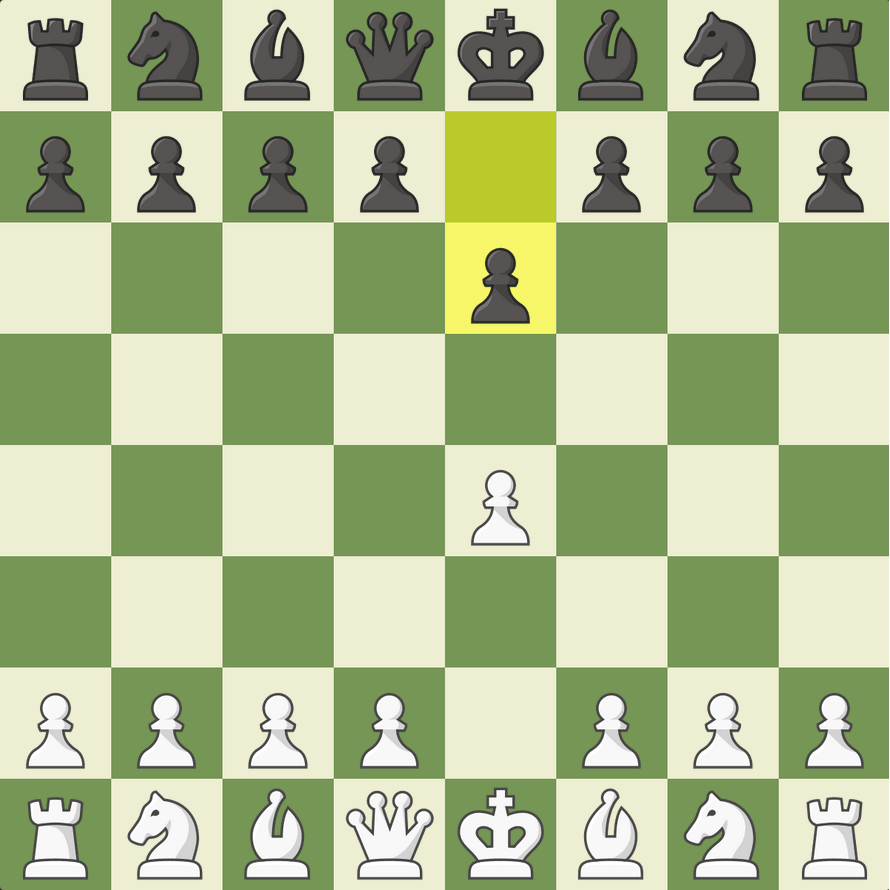French Defense
The French Defense is one of the most popular Black responses to 1.e4. It has consistently been a part of masters' repertoire since the 1800s and one of the favorites of positional players. Usually leading to slower games, this opening is a good choice for players of all levels.
- Starting Position
- Variations
- How To Play Against The French Defense
- History Of The French Defense
- Famous Games
- Conclusion
Starting Position
The French Defense starts after 1.e4 e6. Black's move by prepares the d7-d5 push to challenge White's center immediately. 1...e6 also opens lines for Black's dark-squared bishop and queen, an advantage over the Caro-Kann and Slav Defense (where Black also plays for the d7-d5 push).

The downside to 1...e6 is that Black imprisons their light-squared bishop, something that doesn't happen in the Caro or Slav.
The French Defense usually leads to closed, slow games, where piece maneuvering and pawn breaks are of the utmost importance.
Pros
- Solid and sound structure
- Sharp counterattacking possibilities
- Easy to learn
Cons
- Black has a space disadvantage
- Black's light-squared bishop is locked in
- Can become passive
Variations
Like many other classical openings that have been around for a long time, the French Defense has a lot of theory behind it. Below you can read about the most popular variations of this opening:
Tarrasch Variation
The Tarrasch is one of the most popular variations of the French, and it starts after 1.e4 e6 2.d4 d5 3.Nd2. White's 3.Nd2 avoids the pin on the knight after Black's common 3...Bb4 (Winawer Variation, discussed below). White opts for a more solid approach to face the French, aiming for a slight but safe advantage.
Winawer Variation
Another variation that enjoys much popularity, the Winawer starts with the moves 1.e4 e6 2.d4 d5 3.Nc3 Bb4. Black plays for positional imbalances, usually exchanging the dark-squared bishop for the c3-knight. After that, White will have the choice of playing either a tactical or a more positional game. These are the trickiest and most tactical lines in the French Defense.
Classical French
The Classical French was the most popular way to respond to the French at the beginning of the 20th century. White would play for a strong center with the f2-f4 push, sometimes followed up by long castling and expansion on the kingside. The Classical French occurs after 1.e4 e6 2.d4 d5 3.Nc3 Nf6 4.Bg5.
Advance Variation
The game enters the Advance variation after the moves 1.e4 e6 2.d4 d5 3.e5. This line usually involves a positional struggle in closed positions, where White will try to play on the kingside, and Black will play on the queenside.
Exchange Variation
The Exchange Variation of the French happens after 1.e4 e6 2.d4 d5 3.exd5. This continuation results in an equal position, giving this line the reputation of being drawish. In fact, most of the games do end in draws, with Black having a slight edge over White in decisive games.
How To Play Against The French Defense
The well-prepared White player should score well against the French Defense. Most of the popular lines in this opening have White winning or drawing most of the games. The variations below show promising results for White.
Tarrasch Variation
The Tarrasch Variation scores well against the French Defense, with White winning 42%, drawing 30%, and losing 28%. The White player can develop sensibly and use their central pawn wedge to their favor. White avoids the Winawer lines and is prepared for a semi-open or fully open position.

Advance Variation
If you enjoy playing closed positions, the Advance Variation is a good pick for you. White's 3.e5 shuts down the center immediately. White's pawn chain will lead them to attack on the kingside, while Black will go for queenside activity. White outscores Black in these lines, which generally lead to tense maneuvering positions.

History Of The French Defense
The French Defense is one of the oldest openings in chess. The opening's name comes from an 1834 correspondence game between the London Chess Club and the Paris Chess Club. Although it has never surpassed other openings as Black's primary response to 1.e4, the French Defense has always been present in top games.
Some of the strongest players in history have included the French Defense in their repertoire. Akiba Rubinstein, Aron Nimzowitsch, GM Mikhail Botvinnik, GM Tigran Petrosian, GM Viktor Korchnoi, and GM Wolfgang Uhlmann were a few of the top players of the past who played the French regularly. Contemporary grandmasters who also make consistent use of this opening include Evgeny Bareev and Alexander Morozevich.
Famous Games
London Chess Club vs. Paris Chess Club, 1834
Fischer vs. Uhlmann, 1960
Korchnoi vs. Udovcic, 1967
Conclusion
You now know what the French Defense is, how to play it, counter it, its history, and more. Head over to our Master Games page to study how the greats handle this opening to get even better at it!


